Summit Elevation 6,081 feet
Hiking Distance: Drive-up
County: Klamath
Buck Peak Lookout Site
WillhiteWeb.com
In 1932, plans were being made to make Buck Peak a lookout site. Construction of the lookout house was approved and money provided, and as soon as the site was secured and cleared. Approximately 100 trees averaging 26 inches in diameter would need to be cut, a mix of poor quality yellow pine, Douglas fir, and white fir. By the end of summer, approval was granted by the Department of the Interior. Construction started on a 21-foot tower constructed by the Crater National Forest. The cab was a model L-4A 14x14 foot with a hip roof.
In 1933, panorama photos were taken at 24 feet above the ground.
In 1936, a ten-man crew from the South Fork CCC camp worked on telephone line construction. $75.00 expended on materials.
In 1940, one early storm had the Buck Peak lookout alone reporting 124 lightning strikes. Then in August, the station was struck by lighting so violently that the instruments were put completely out of commission. The district ranger debated replacing the weather station saying, the standard instrument shelter for fire danger station stations is not necessary where you do not have fan psychrometers. Where only fuel stick scales are used, they may be fastened to the inside wall of the garage or if the garage is too far away from the fire danger plot, a temporary box shelter may be nailed to a post or tree on the site. The standard shelters are relatively expensive to construct and should not be used unless absolutely necessary.
In 1941, the lookout was operated under the control of the Rogue River National Forest, Lake of the Woods district. Columbia Utilities Company provided telephone service. The lookout operated 110 days this year.
In 1943, the lookout was Francis Bush. One Sunday, he was eating dinner and as he raised a spoon to his lips with an apricot section on it, lightning struck the lookout tower. Mr. Bush said the spoon and the apricot traveled in different directions. The lookout dizzily picked himself up after a few moments and soon noticed that the lightning had started a fire in his area. He lifted the phone to report the fire and immediately hit the floor for the count of ten. With the aid of his wife Mr. Bush regained his feet and when his head cleared somewhat he disconnected the phone switch with a long wooden stick. The two then set excitedly out for Clover Station, since the rapidly spreading fire must be reported, from where men were dispatched. The fire in the Buck Peak area spread over and acre and a half before they got it under control.
In 1948, the Klamath Forest Protective Association discussion: If we continue to protect the Buck Lake area, it will be necessary to move out of the Clover Creek Station to Buck Peak and establish a smokechaser lookout. This will not entail much additional expense as the National Forest is willing to make their facilities at Buck Peak available to us. The only change necessary would be construction of four miles of telephone line and we have the wire for this on hand. (KFPA Annual Report)
In 1950-1953, the lookout was Jack Holmes, his wife Lorraine, and their young daughter Sharon. The rest of the year, Jack worked at a factory job. The Holmes insist that they have no time on their hands living on Buck Peak. Sharon reads, plays with her toys, and amuses herself with little walks into the forest. Lorraine keeps her 14x14 house, does the laundry, cooks on a gas stove, and has time for baking. Jack, besides his weather and lookout duties, maintains the local fire roads, chopping out six to eight logs a day that might hamper smoke chasers. Every other day, he drives to a nearby spring and brings back three milk cans of precious water. For his duties, Jack gets $210 a month, while Lorraine makes $50 as an auxiliary lookout. It is a fine place to save money they say.
The Holmes miss fresh foods most of all. Lorraine drives the pickup truck [with two-way radio on all the time] down the low gear road to Klamath Falls every two weeks for supplies, but milk, meats, and vegetables do not keep without refrigeration, and Buck Peak has no electricity. They rely on canned and dried foods, plus imaginative cooking. Baths are taken in a metal tub in the middle of their one room. The Holmes have no complaints, for this kind of outdoor life is what they enjoy most. Some lookouts use the summer for writing, or for extra college study. Other posts are manned by hermit-like men who do not like to shave regularly and to whom privacy is a real boon. In any case, it is a job for persons with sharp eyes and a love of the great outdoors, panicky people need not apply.
In 1960, the lookout was 19-year-old Laird Millburn, a youth from Colorado on his first fire protection job. One morning, he reported to KFPA headquarters that he could see a spot smoke from the lookout. As his call came in, Wardell received a telephone call from Ned Putnam Logging Company. Putnam, on his way to Ashland by plane, was passing over the area and radioed his shop details of the fire just below him. The blaze, thought to have started moments before when a spark was caused by a track of a skidding cat going over a rock, was burning in heavy slash where bucked logs lay in a Weyerhaeuser logging operation. Weyerhaeuser logging crews were just going to work and had two dozers within a quarter of a mile of the spot. They got three or four men and a pumper on the job right quick. Three men with a pumper were also sent from Penny Spring. Within 90 minutes of being reported, the fire was trailed and the fire was controlled at about one-half acre with around 40 men on it. The KFPA officials had high praise for the lookout who turned in the alarm. Laird Millburn was the son of an U.S. Air Force Colonel in Colorado, and he planed to return to the University of Colorado after the firefighting season.
In 1962, the tower legs and bracing was replaced, using 12x12 inch legs and 4x8 inch bracing.
In 1963, a June violent storm with gusts up to 65 miles per hour were registered with winds more generally registered at 40 miles per hour. Later in the season, the Winema Forest Ranger reported vandalism. Someone clipped the wires connecting a telephone receiver to an emergency telephone box near the summer homes on the east side of Lake of the Woods. The telephone linked that area with the fire lookout station at Buck Peak and the Lake of the Woods. When the receiver was disconnected from the telephone the residents of that vicinity were deprived of the only means of communication to report a fire. It also disrupted communications between Buck Peak and the ranger station. The severing of the wires had opened the three phone circuit and the lookout could not contact the ranger station, although the latter could call the guard tower. If at that time a fire had broken out in the region under surveillance by Buck Peak lookout, that guard would have been unable to report it to the fire control officer at Lake of the Woods. Several days after the wire cutting, employees of the district traced the disruption of telephone service to the telephone east of the lake.
In 1968, the Buck Peak lookout was disposed of by burning during the month of November. This was done by R.D.M.A. personnel. Plans were made in spring for clean-up of the site and disposal of the unburned material. Besides the normal clean-up and disposal of such things as nuts, bolts, roof flashing, stove pipes, there was also a 30-foot section of all metal stairway.
Lookout History
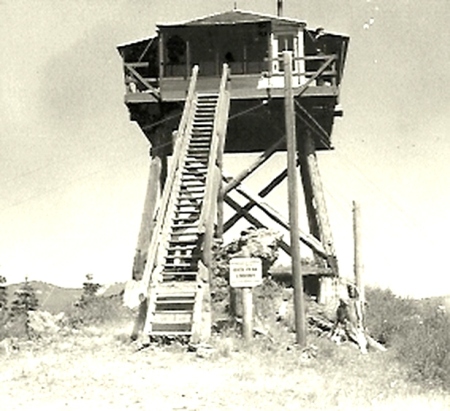
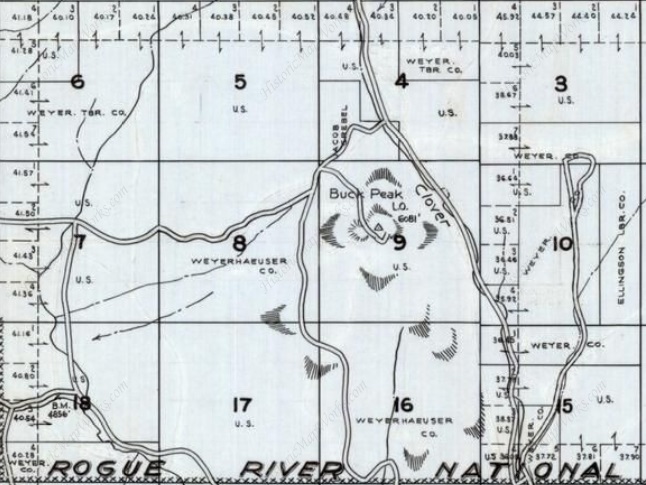
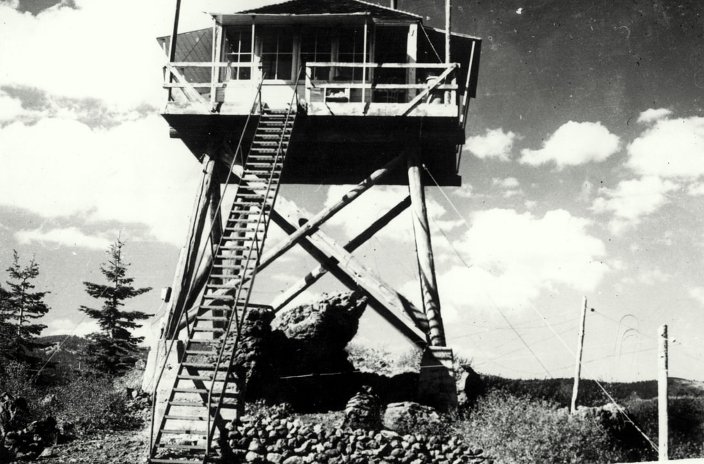
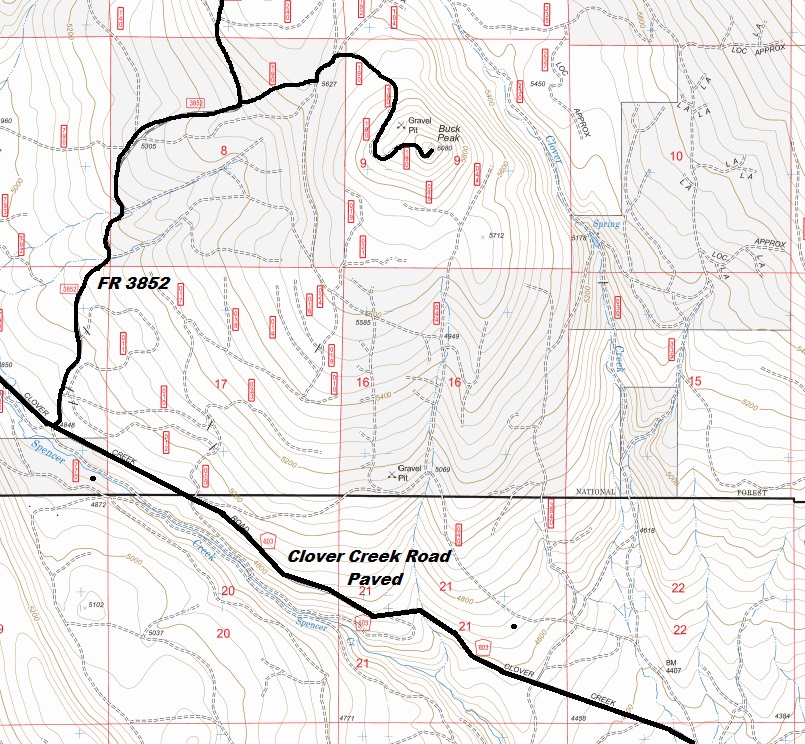
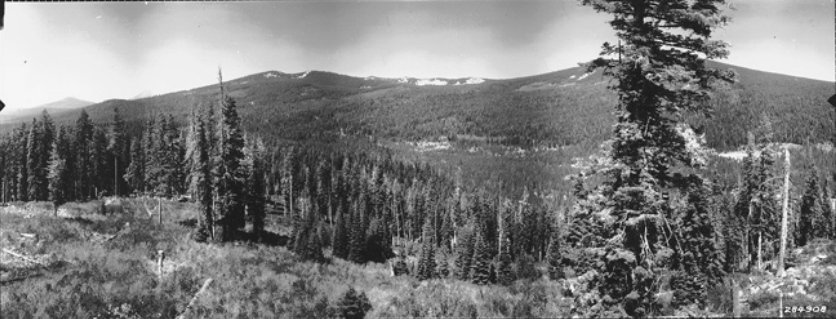
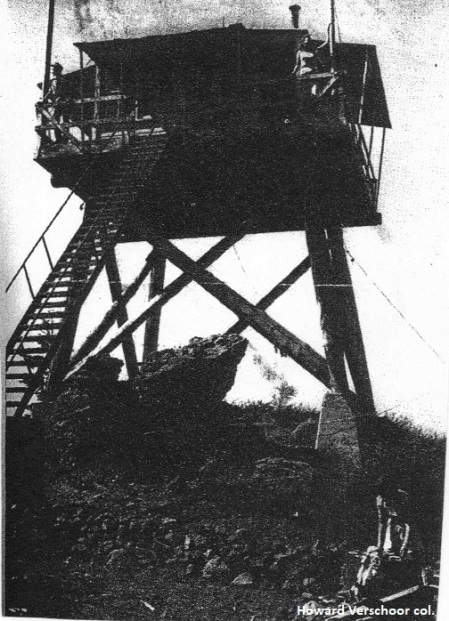
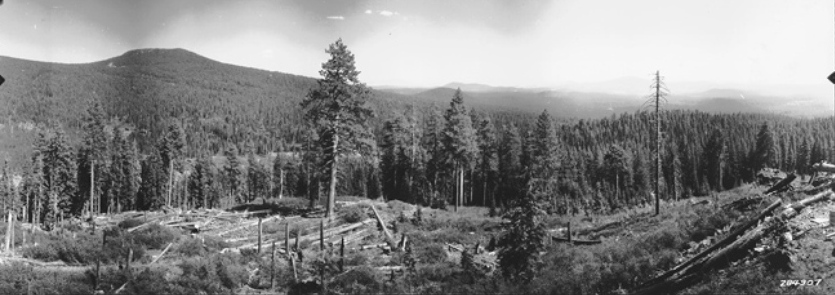
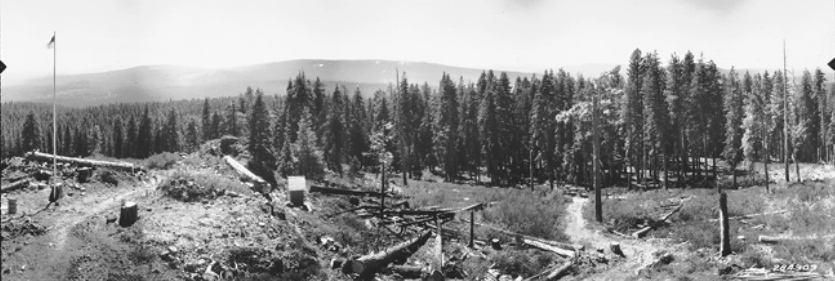
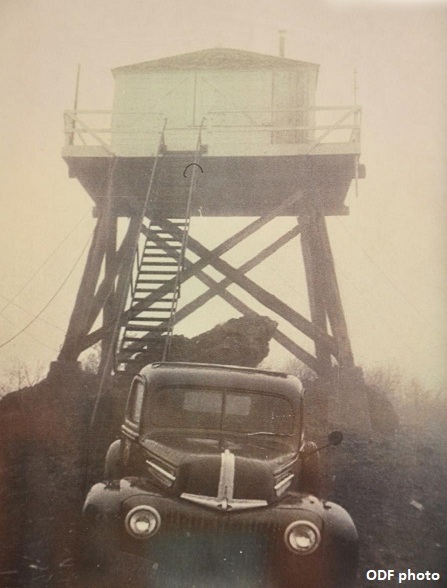
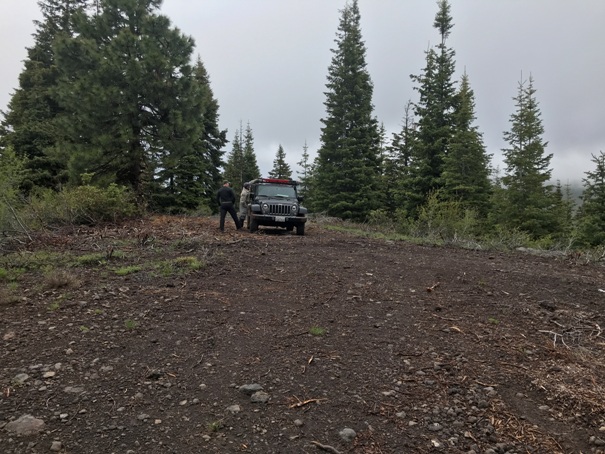
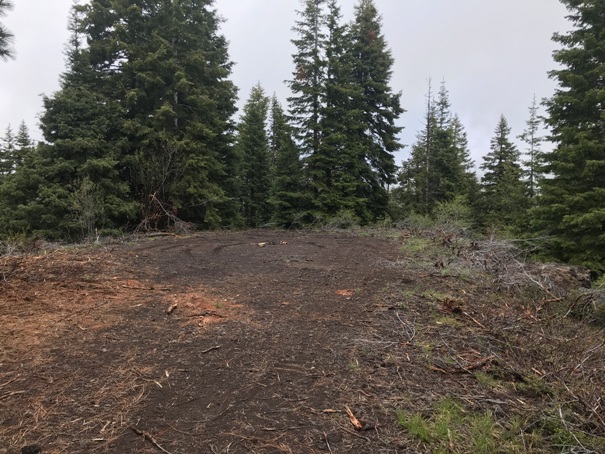
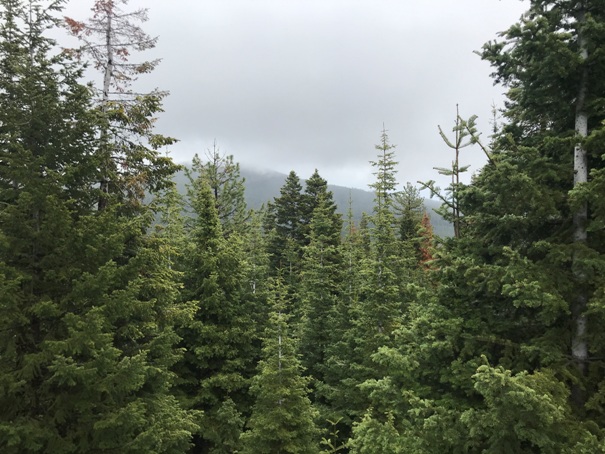
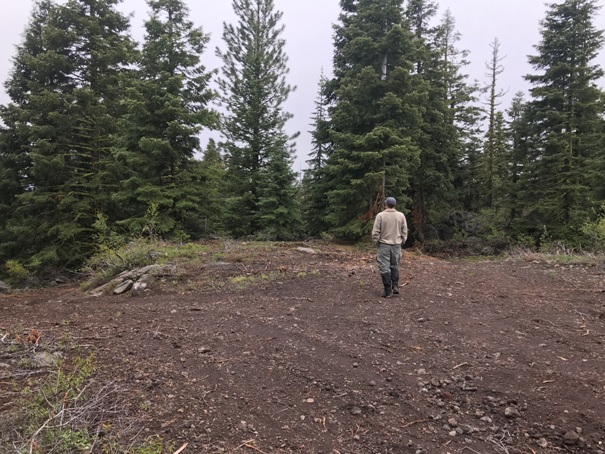
Limited views in 2022
Buck Peak 1942
Buck Peak
Buck Peak
Buck Peak on 1961 map
1933 Southwest
1933 Southeast
1933 North












